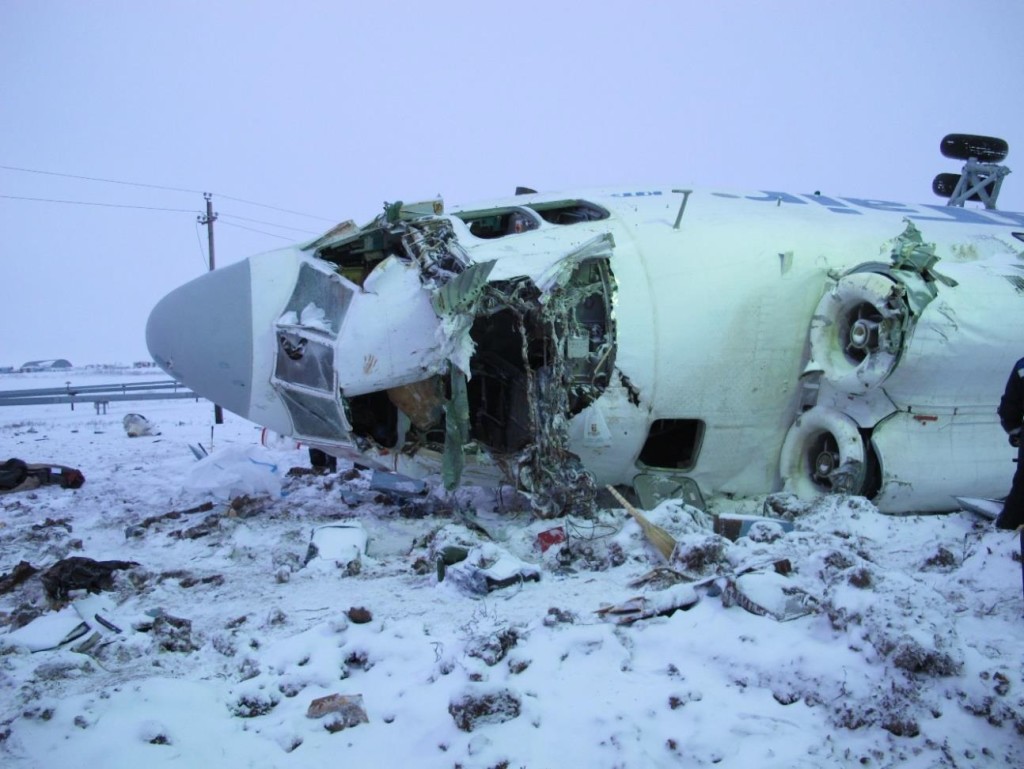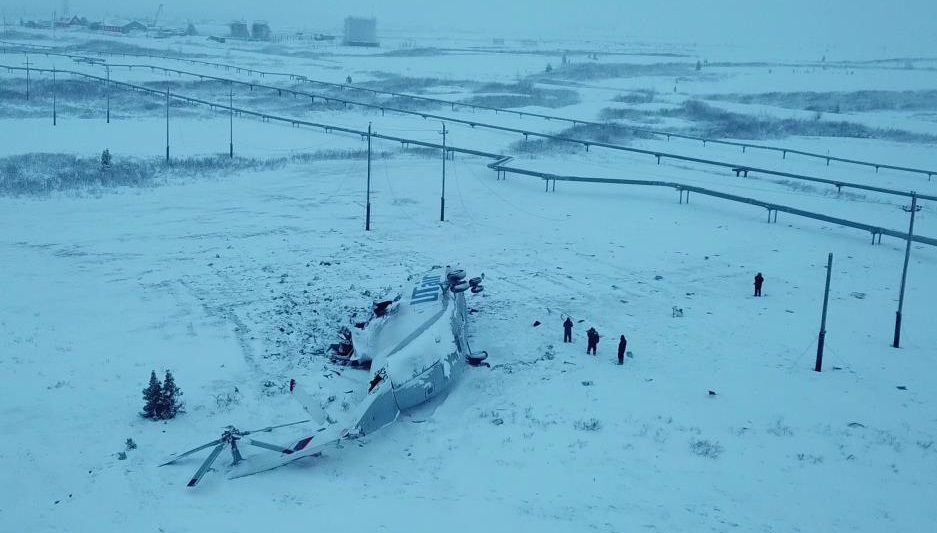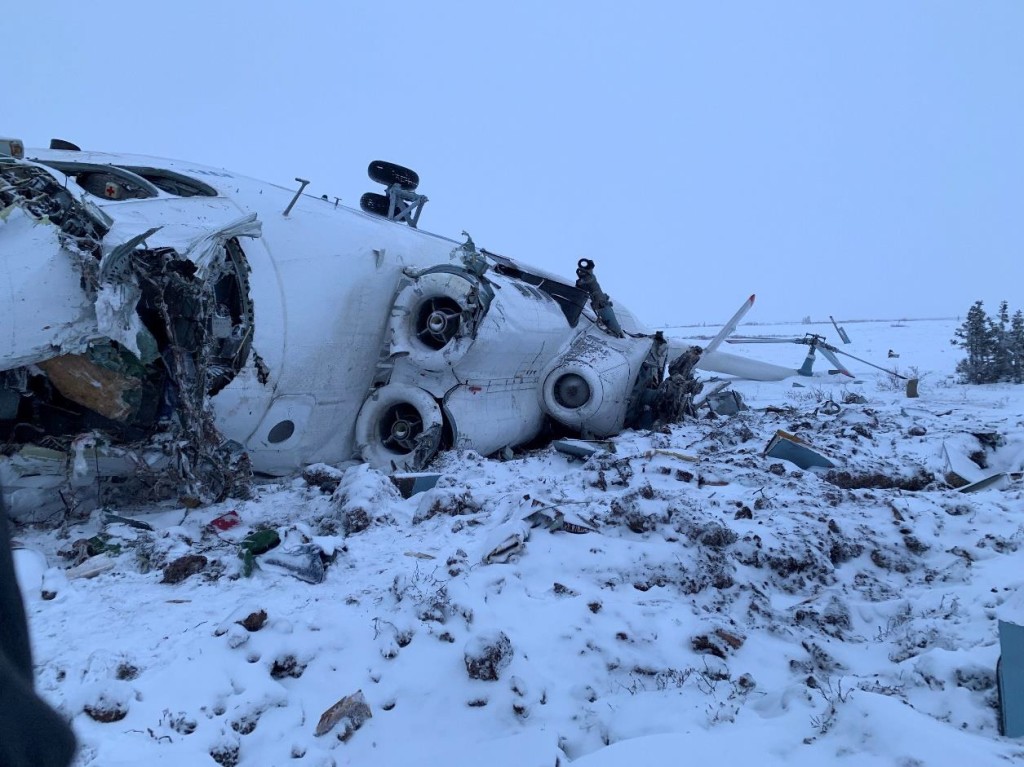Mi-26T Arctic VRS Accident 28 November 2018
UTair Mi-26T helicopter RA-06029 crashed on 28 November 2018 with the loss of one life, the aircraft commander.
Five other crew members survived, one with head and spinal injuries. The helicopter was returning from delivering 17 t of “building materials” to Naulskaya in the Nenets Autonomous Area. the 56 t Mi-26T can carry a maximum payload of 20 t. It is powered by two 11,400 shp D-136 turboshafts and has a 32 m (105 ft) main rotor diameter.
Safety Investigation
The IAC/MAK safety investigation report (only available in Russian) revealed that during a night VFR flight, the aircraft descended from 2000 ft to around 15o ft AGL, and slowed to c 30 knots, c 3 nm from its destination at Pizhma as the weather unexpectedly deteriorated. The crew had not received a more recent forecast while unloading at Naulskaya.
The investigators say the helicopter impacted the ground 760m from Pizhma during a second approach attempt after entering a Vortex Ring State (VRS) while distracted by the visual search for the landing site.
The accident was the result of the crew not making a timely decision to leave for the alternate aerodrome when the weather conditions on the landing site worsened to values lower than those set for VFR.
The investigators say contributory factors included:
- unsatisfactory interaction of the crew
- approach at altitudes and flight speeds less than those established by the Flight Manual
- deficiencies in the selection of crew members capable of working away from base
- lack of an effective control of deployed crews
- deficiencies in the Safety Management System (SMS) which did not identify and reduce risk when performing operations in the difficult conditions of the Arctic.
UPDATE 25 April 2020: Another dramatic Mi-26 accident is caught on video.
Safety Resources
- AAIB Report on 2013 Sumburgh Helicopter Accident
- Hard Landing after VRS on Approach to a Hospital Site
- UPDATE 19 April 2020: SAR Helicopter Loss of Control at Night: ATSB Report
- UPDATE 18 July 2020: Vortex Ring State: Virginia State Police Bell 407 Fatal Accident
- UPDATE 3 October 2021: French Cougar Crashed After Entering VRS When Coming into Hover





Recent Comments